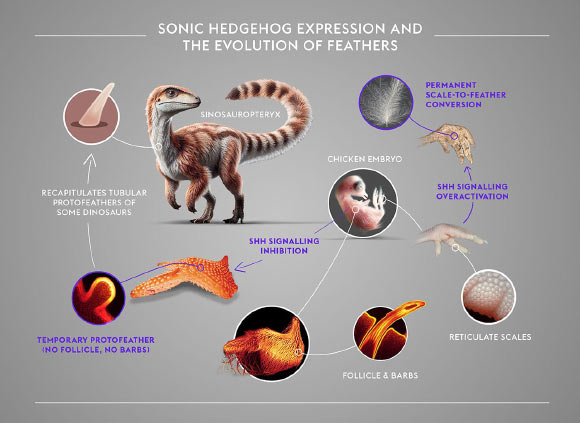Molecular signaling pathways are communication systems that transmit messages within and between cells. According to a new study by University of Geneva scientists, inhibiting one such system, called the sonic hedgehog (Shh) pathway, strongly perturbs feather development in chickens by restricting feather bud outgrowth, invagination and branching.
Avian feathers are intricate appendages whose forms vary substantially across species and body areas, and between juvenile and adult stages.
Understanding both the developmental and evolutionary mechanisms underpinning this morphological diversity has long fascinated biologists.
The morphological intricacies of avian feathers make them an ideal model for investigating embryonic patterning.
In particular, the Shh pathway is an important mediator of feather outgrowth and branching.
However, functional in vivo evidence regarding its role during feather development remains limited.
To fill this knowledge gap, University of Geneva researchers Rory Cooper and Michel Milinkovitch used light sheet fluorescence microscopy imaging to study the normal patterning of embryonic feathers and how their shape develops.
They also used precise intravenous injections of sonidegib to pharmacologically inhibit Shh pathway signaling during feather development at embryonic day 9, which precedes feather-bud outgrowth on the wings.
This treatment temporarily modified Shh expression to produce striped domains instead of spots on the skin, temporarily stopped feather development, and resulted in unbranched and non-invaginated feather buds — akin to putative proto-feathers — until embryonic day 14.
Although feather development partially recovered later during development, hatched sonidegib-treated chickens exhibited naked regions of the skin surface with perturbed follicles.
Remarkably, these follicles were subsequently reactivated by seven weeks post-hatching, highlighting the robustness of feather patterning as a developmental…
Read the full article here

